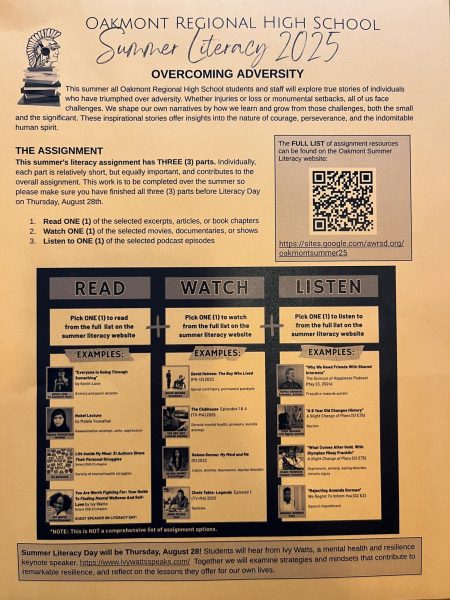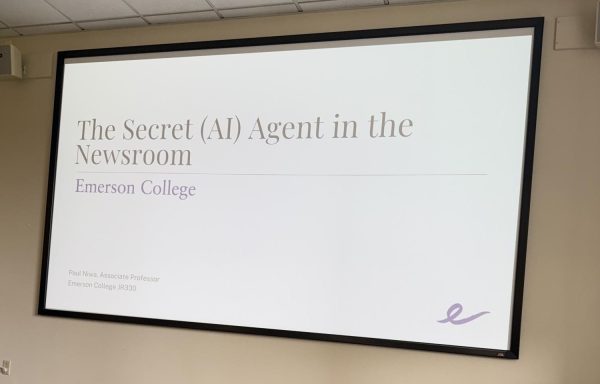Opinion: Beware of Early Decision
Abby Mulhall poses with her Northeastern University early decision acceptance letter.
Early action, early decision, regular decision; all three of these terms are flooding the minds of high school seniors currently navigating the college admissions process. For those who haven’t seen these words in a long time, or haven’t quite reached the point in their lives that these words become relevant – here are their meanings.
According to the Counselors of College Board, early action applications are nonbinding, “Students will receive an early response to their application but do not have to commit to the college until the normal reply date of May 1st.” On the other hand, early decision applications are binding, meaning that students who submit early decision applications and are admitted must attend. Regular decision applications are either rolling, or not reviewed until a later date and they are nonbinding.
Students are allowed to submit only one early decision application, and if they are accepted to the school, they are required to withdrawal all of their other college applications without being refunded for the application fees. Students must also adhere to the “Early Decision Honor Code”, which is signed off on by the student, their parents, and their guidance counselor. It states that the student will accept their offer of admission unless they are financially unable to.
The purpose for colleges to have an early decision application is to allow students who have a clear frontrunner in the college decision process to show to the college that they are fully committed to attending. Because of this, many college acceptance rates are significantly higher for early decision applications. Although the intentions of this application are good, there are many drawbacks to submitting an application through early decision.
The first danger of applying through early decision is the financial uncertainty. Applicants who are applying through early decision, or ED, commit to attending the college before their financial aid package is revealed. The reality of this is that colleges can make ED applicants pay full sticker price because they’re already committed to attend upon acceptance. Thus, accepted students are not given the chance to compare and contrast their financial aid packages – grants, scholarships, and work studies – with other colleges.
One Oakmont Regional High School senior, Abby Mulhall, has been experiencing the nerves of committing to a college without knowing how much it will cost her. “I was recently accepted through ED to my dream school but, not having the opportunity to compare and contrast my financial aid packages, gives me a lot of anxiety and uncertainty,” Abby added.
The main advantage to applying to a college through the early decision application is the remarkably higher acceptance rate. For example, Northeastern University, which is located in the heart of Boston, had an early decision acceptance rate of 33% for their class of 2026. Compared to their regular decision acceptance rate of just 6.7% for that same year, the chance of acceptance for early decision applicants is much higher than for regular decision applicants.
Helen Yan, a current senior at Oakmont, was thinking about applying through early decision but, after some research and serious consideration she decided not to. “My guidance counselor asked me if I was applying early decision because I was scared that I wouldn’t get accepted if I applied regular decision, or if it was because I really knew that I wanted to go there. His question helped me realize that I really was only considering it because I thought I wouldn’t be accepted otherwise,” Helen explained.
Early decision applications are due in early to mid November, and most of the acceptances come back around mid to late December. Applying to college via this timeline forces high school students to make decisions in regards to their major a lot earlier than for typical high school seniors. Many students may change their ideas about what they want from a college during the course of their senior year. Taking this college application route locks students into attending a college over ten months before college begins in the fall.
One big question from students who are considering applying to college through the early decision application is, how can I get out of my early decision agreement, and if I do what will happen?
The most common way to get out of an early decision agreement is to prove that the financial package offered is insufficient. There have been some cases where students notify colleges of being unable to attend due to financial burden, and through an appeal process the colleges may award the student a more affordable financial aid package.
Although colleges are still a business, they need students to enroll, and may accommodate financial situations. If a college is unable to offer a student more aid, and there is proof of a considerable financial burden, the student is able to break their early decision agreement. Although this is frowned upon by colleges, there needs to be a last resort for students whose financial need is not met.
While financial need is the most common reason for students to back out of their early decision agreement, there are a few other reasons deemed acceptable by colleges. According to usnews.com, some of these “acceptable reasons” include medical issues, sick family members, etc. An early decision agreement is not legally binding but, that does not mean that there won’t be consequences if you back out with unjust reasoning.
Many colleges will place students who unjustly deny their early decision acceptance onto a “do not admit list.” These lists are available to admissions personnel from colleges all over the country, and can convince colleges to reject students who are on the list, even if they’d otherwise accept them.
The early decision application can be an effective way for applicants to show their commitment to a college but, the danger involved with committing to a college early on into senior year without knowing any financial information can be detrimental. Students who are unaware of the danger in early decision could very well find themselves wishing they had done some more extensive research before pressing submit.

Delaney Taylor is currently a senior here at ORHS, as she is a member of the Class of 2023. Delaney has served as the editor of The Oakmonitor for the...











